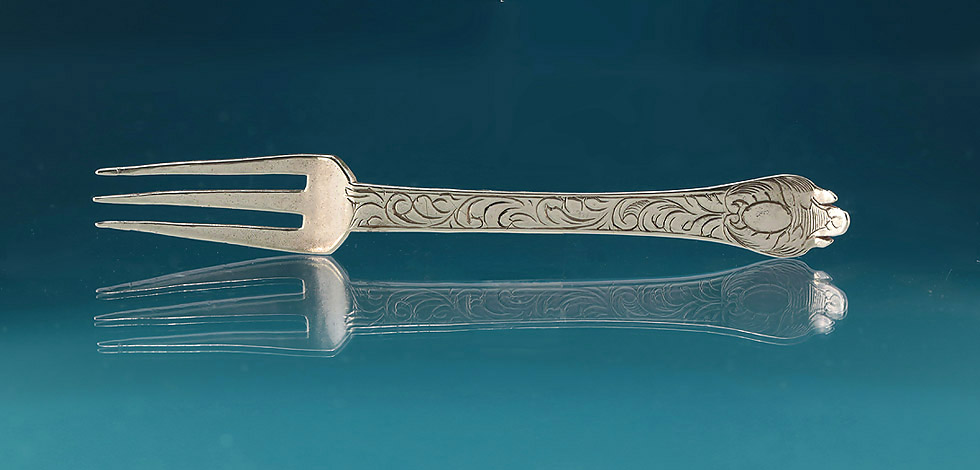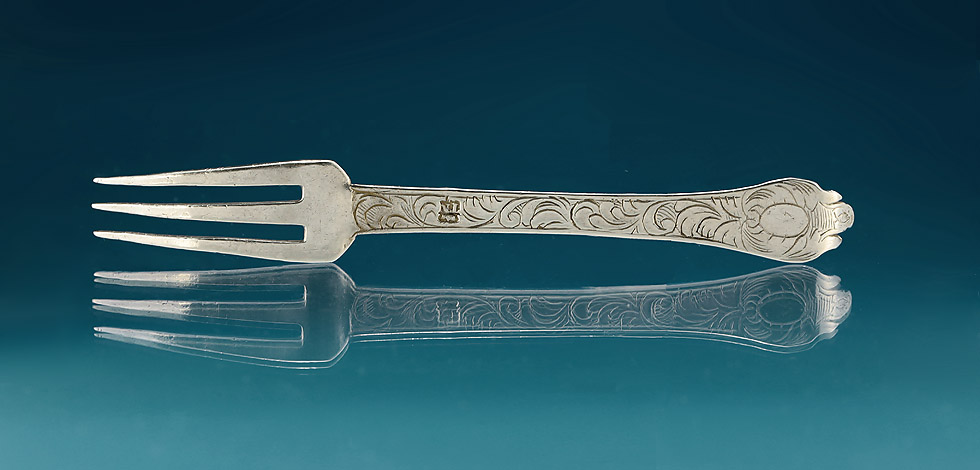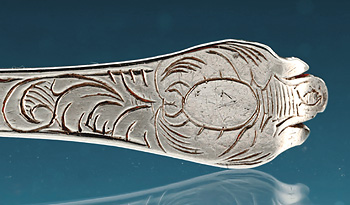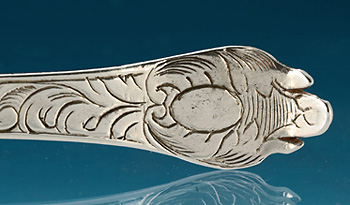|
The small three tine fork trefid engraved to each side with stylized foliage
and an unengraved oval at the rounded-shoulder trefid terminal;
marked with TN crowned* within a shaped punch;
terminal ovals with possible remains of very small scratched initials
Notes :
The fork itself (actually appearing from antiquity) was reintroduced to the British table
with Charles II's 1660 return from France.
Its most common 17th century use was for "sweetmeats" (small sticky fruits messy to handle with the fingers).
Whilst the squared base tines on this 2-tine fork resemble a known Charles II and several James II examples,
as well as the two-tined ending to "sucket spoons", the small two-tine all silver fork is somewhat rare.
The majority of late 17th century forks had three tines,
with exception of steel pointed 2-tined forks used for "air-carving" of meat.
Further comments to the rarity of the trefid forks appear in
Silver Flatware, English, Irish and Scottish, 1660-1980 (Ian Pickford), p.77 :
"These are very rare, the fork only just coming into general use in England at the end of the 17th century.
When found, trefid forks usually have three prongs,
although occasionally two and sometimes four prong forks are found.
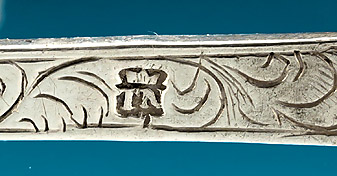
*'TN Crowned' is a maker's mark apprearing on
several documented pieces of small silverware, dating c1690.
Ref : Christie's London, sold a similar c1690 trefid sweetmeat, TN Crowned, in 1997
Condition : Excellent with expected light surface scratches;
tines with full length but expected scratches
3-7/8" Long / 0.25 oz.
(Images shown are oversize for inspection)
SOLD
#8059
Please Inquire
|
